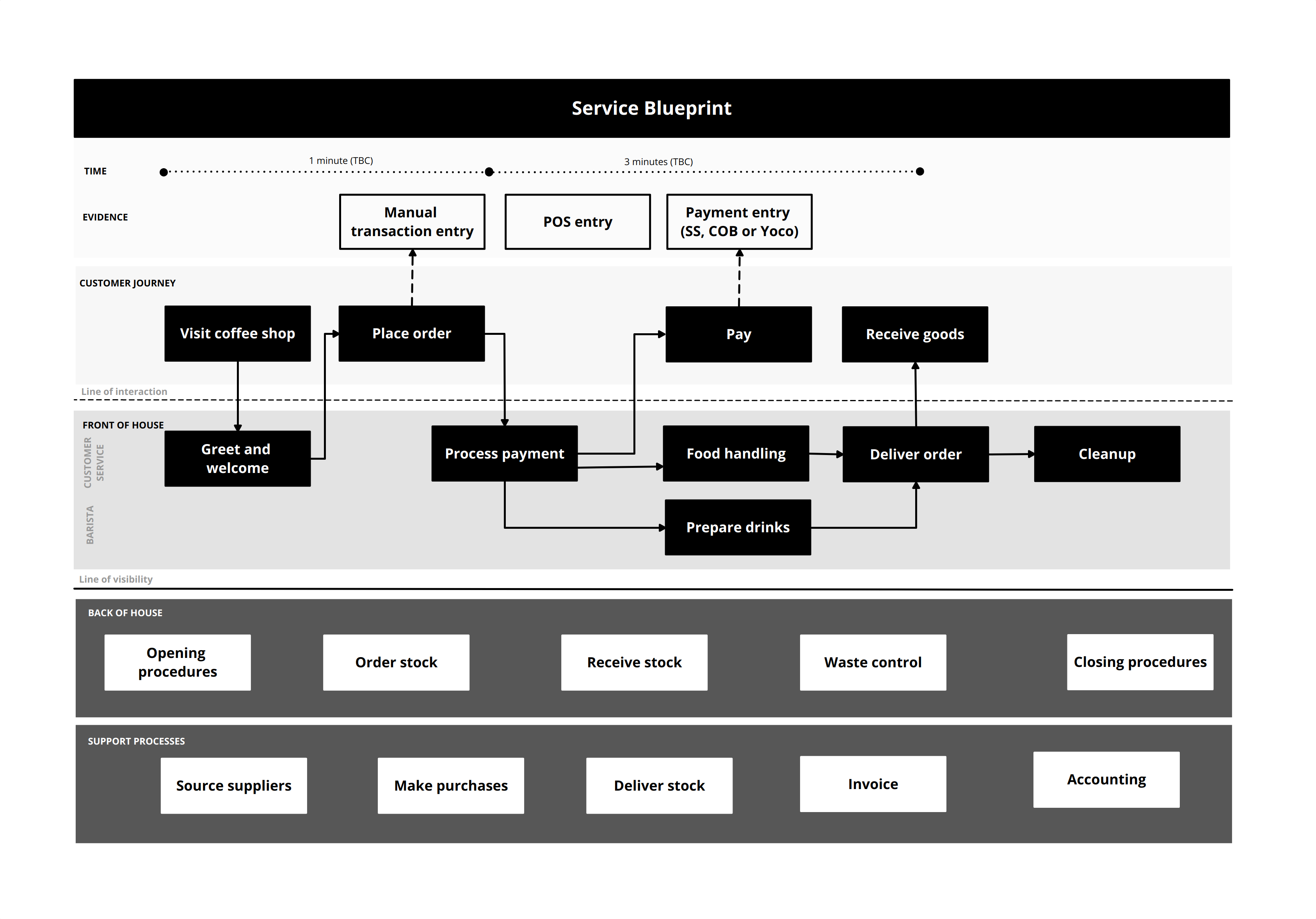95%
Inventory Errors
50%
Supplier Satisfaction
90%
Admin time
How automating operations enabled a coffee shop chain to manage their inventory more efficiently.
Read how a two person team owning and managing two coffee shops and a coffee roastery, and with an ambitious goal of publicly listing the company, saved time and increased cashflow by moving their manual stock sheets to Coda.io.
The end result?
Accurate invoices produced in a fraction of the time, ultimately reducing the time between spending money to purchase stock and receiving a reimbursement from an external partner - increasing cashflow.
The journey
From time consuming and paper heavy to a fast and reliable stock management in 3 months.
get direction
Begin with a reality check: know where you stand, then plan your journey to the goal. Main outcomes:
design
Determine stakeholder needs, evaluate tools, and design a prototype. Main outcomes:
implement
Time to get to work and fill in the details andmake sure everyone is on board with the solution. Outcomes included:
What was the problem?
When I joined a two man team running two coffee shops and a coffee roastery with an ambitious goal of becoming a publicly listed company, they struggled to find the time to check, compile, and send through the weekly invoice to the external accounting team. This was mainly as a result of the manual process, duplicate work, and using separate spreadsheets stored on people's private accounts.
The coffee shop struggled with manual inventory management which resulted in:
The solution
To tackle the coffee shop's challenges, a customized no-code solution was created using Coda and Documint. This solution seamlessly integrates three essential elements: a user-friendly inventory management system, automated invoicing for enhanced security, and a data-driven dashboard for insightful decision-making.
The implemented no-code solution yielded significant benefits, including:
There is a time in the life of every problem when it is big enough to see, yet small enough to solve.
- Anonymous
Understanding the landscape
This project was driven by an ambitious goal rather than seeing a need for a problem to be solved. The entrepreneur, who has successfully established a small coffee shop with one trustworthy barista, saw the manual processes as sufficient. When he expanded his enterprise to partner with a much larger organization, the need for a inventory system became evident. The manual processes was seen as a frustration rather than a problem at the time, but an early warning of future scaling issues.
The first step towards helping the entrepreneur become scale-ready was to understand the challenge and identify the constraints. By spending time in the coffee shop observing the front line shop manager, an initial list of user needs and constraints became evident. The process was translated into a service blueprint to solidify the current state and resolve the conflicts in perception at an early stage.
Uncovering the constraints
As there are literally hundreds of tools available, the first step was to uncover the most important user needs.

Selecting Coda
Understanding the needs and constraints, I set out on my search to find the perfect tool. The first tool that looked promising was SheetGo, which would satisfy the need to keep everything exactly as it was, only enabling the data to be connected and managed into a central repository that reduced the need to copy and paste data from sheet to sheet. However, this tool didn't provide a satisfying way to allow a non-technical user to enter the data and would still need duplicating the work in order to enter the data.
Another alternative that was discarded was Airtable, mainly due to the performance issues and limited support of different media and tools. After careful consideration, my tool of choice for this project was Coda.io which was by far the most flexible and comprehensive tool compared to alternatives. It allowed me to simply copy and paste the data from the spreadsheets (and buttons to export data back into sheets), supported multi-media formats, and had the ability to integrate to third party tools like Documint that allowed me to automatically generate a pdf invoice from the data. Best of all, I could add a form that would allow the non-technical users to add and view the daily stock.
Lessons learned
Looking back, the key insight was related to the importance of getting full buy-in from the key stakeholders before proceeding. Knowing the power dynamics and decision makers was key to the success of the implementation. The service blueprint allowed the full scope to be taken into consideration. It took a month before the owner bought into investing in a digital solution and was the longest part of the process. But once he was on board, the implementation proceeded smoothly and was ready for initial roll-out within a few weeks. Both the external accounting team and the barista's on the ground were fully on board and supportive.
On the downside, while Coda is extremely powerful and very flexible, it is also one of the most complicated no-code tools I've evaluated. There are limited resources designed to enable a non-developer to learn how to use the tool, and I would rate the learning curve as very steep with limited support. Even doing very basic things that is easily done in a spreadsheet, turned out to be very challenging and requiring a lot of technical support.
Ready to take the first step?
Book a free, no obligation discovery call to start the conversation.
Start the conversationLet's play!
Fill out the form to take the first step towards a stress-free team.